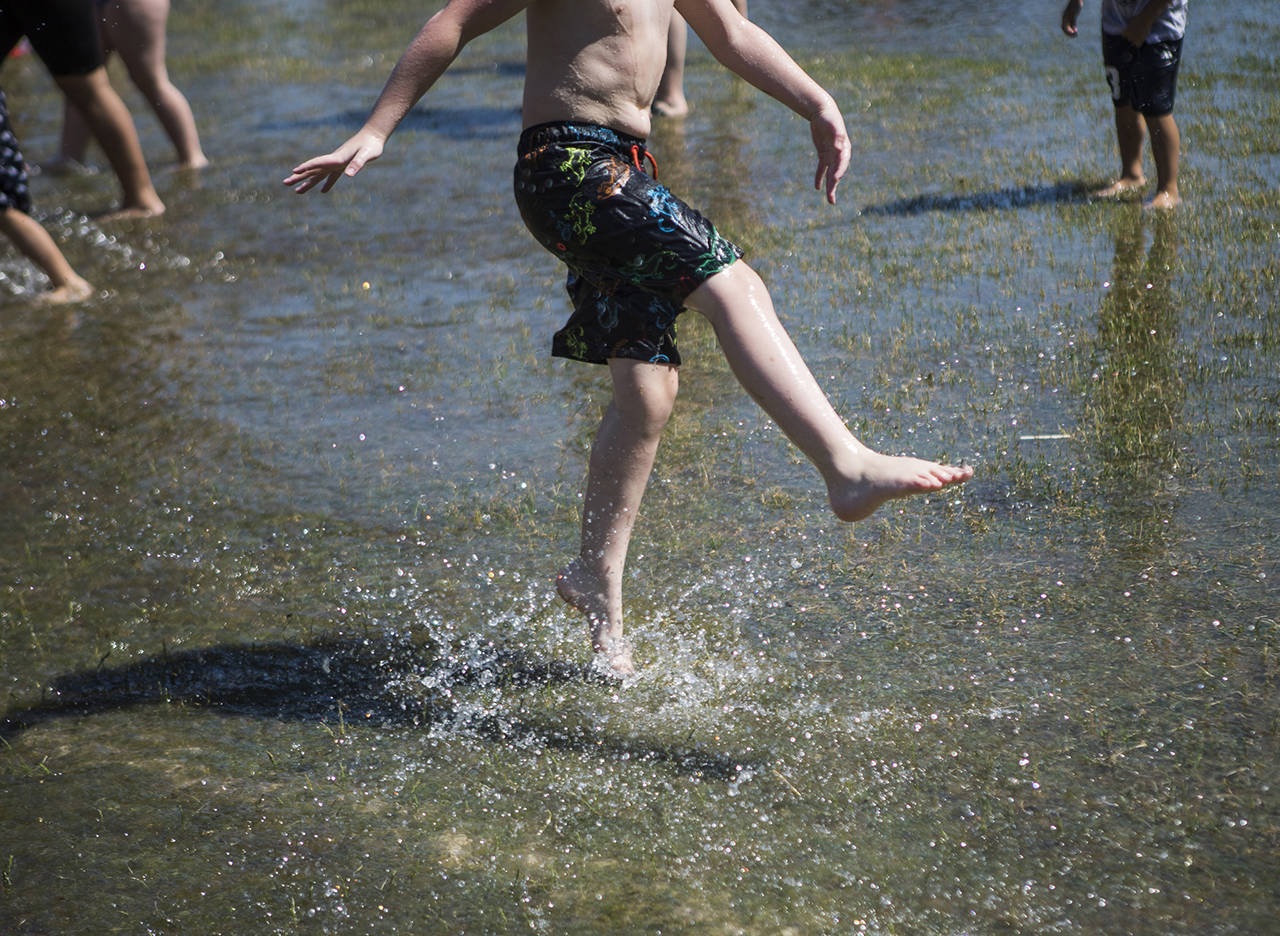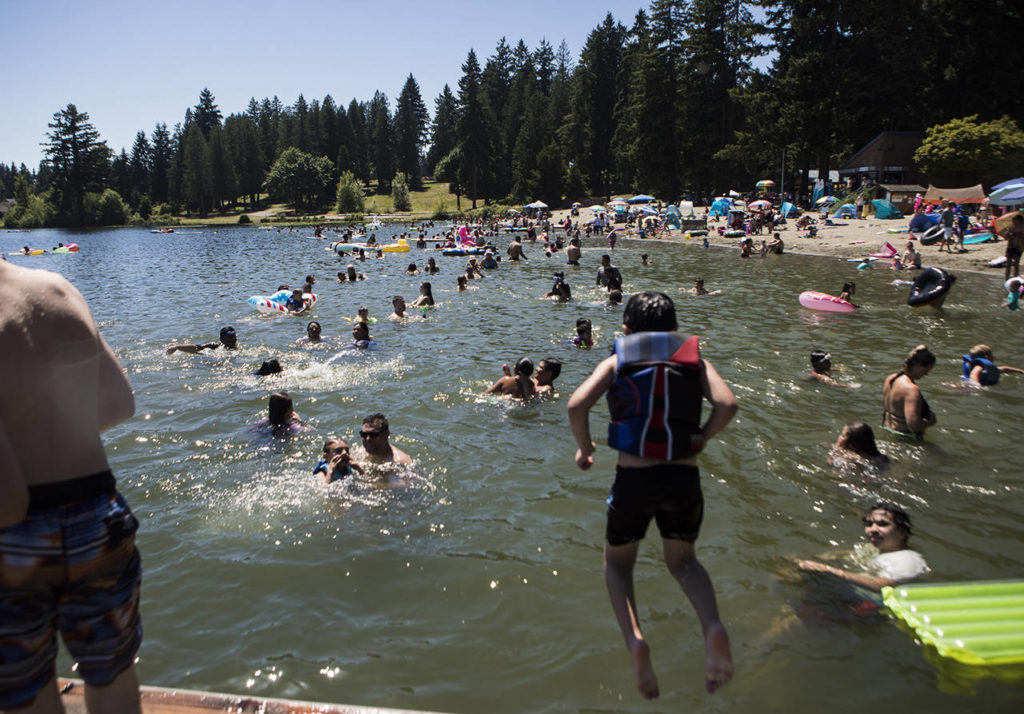EVERETT — Much of Western Washington, including Snohomish County, is seeing another heat wave as temperatures rose Wednesday and are forecast to remain high through Saturday.
Temperatures will increase through the week, said Logan Johnson, a meteorologist at the National Weather Service office in Seattle. On Wednesday, temperatures climbed through the 80s in some places. Snohomish County will see temperatures continue to rise on Thursday and Friday. For example, Sultan was forecast to hit a high of 99 on Friday; 98 was forecast in Monroe; and 95 is expected in northeast Everett. Darrington temperatures were forecast to peak Thursday at 96.
Meanwhile, Friday temperatures in Olympia and Vancouver could reach 95 and 100 degrees, respectively. Portland was expected to see a high of 100 on Thursday and Friday, as well. It’ll likely be even hotter in southwestern Oregon. Gov. Kate Brown declared a state of emergency Tuesday to mobilize Oregon agencies to help keep people safe.
Southern parts of Washington and Oregon are also expected to see more hazy conditions Thursday.
The weather service issued an excessive heat warning for much of Snohomish County through 7 p.m. on Saturday. Overnight lows will mostly remain in the 70s and only briefly drop into the mid- or upper 60s. High temperatures on Sunday were expected to drop back to the high 70s to low 80s in Snohomish County.
“Definitely not expecting anything as hot as it was at the end of June,” Johnson said. “This is more of a typical heat wave that we would get in Western Washington, which is to say high temperatures getting as warm as the mid- to even upper 90s in a few spots, but the last heatwave was certainly something we’re not expecting to see again.”
There were nine heat-related deaths in Snohomish County during that record-breaking heatwave in late June, said Nicole Daugherty, the county medical examiner’s operations manager. Seven of them were men and two were women. The youngest was 49. There are also three more possible deaths on top of the nine confirmed. Those likely stemmed from the heat but will take several weeks to confirm.
Across Washington, the state Department of Health reported 95 heat-related deaths during that event.
Since the upcoming heat won’t be as intense, there should be fewer cases of illness, Johnson said. But that thinking could pose problems.
“It’s kind of a little bit of a double-edged sword,” Johnson said. “It’s great that the intensity won’t be as hot as it was at the end of June. However, it’s important that people don’t take that and say, ‘Oh, this is nothing. I’ve been through worse.’ These are certainly still temperatures that can cause people problems if they don’t take the right precautions.”
Those precautions include frequenting cooling stations, like public libraries, malls and movie theaters; limiting use of ovens and stoves; and avoiding outdoor activity between 3 p.m. and 6 p.m. If people are engaging in outdoor activities, frequent breaks and lots of water can help.
Symptoms of heat stroke or heat exhaustion include skin that is hot, red, dry or damp, a fast pulse, headache, dizziness and nausea. Those most vulnerable to heat-related illness are infants and young children, the elderly, pregnant women and people with chronic health conditions.
Johnson recommended checking on older neighbors and family members.
Air quality shouldn’t be too affected, Johnson said. Smoke from wildfires will be “more elevated, so you may see it in the sky, but not expecting it to be at the surface causing air quality issues or concerns at this time,” he said.
Jake Goldstein-Street: 425-339-3439; jake.goldstein-street@heraldnet.com. Twitter: @GoldsteinStreet.
Talk to us
> Give us your news tips.
> Send us a letter to the editor.
> More Herald contact information.


























